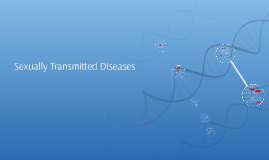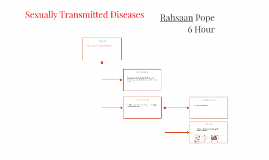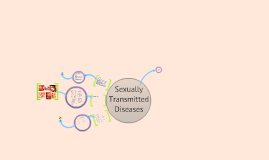Sexually Transmitted Diseases
Transcript: Works Cited Page Print 1. Get fit, Stay well 2. Understanding Human Sexuality Internet 1. http://www.cdc.gov/std/gonorrhea/stdfact-gonorrhea.htm Multiple Choice Questions! Which is not one of the most common STI's found in college students? A. Chlamydia B. HPV C. Herpes D. Gonorrhea What are common symptoms of HPV? A. Vaginal discharge or pus from the penis, and painful urination B. Califlower like warts or fatigue C. Jaundice or joint pain D. Dementia and skin rashes From:http://www.scienceclarified.com/images/uesc_09_img0520.jpg Herpes is caused by the herpes simplex virus which comes in two types: HSV -1 and HSV -2. HSV -1 causes cold sores around the mouth while HSV -2 causes blisters and sores usually on the genitals and it also be anywhere on the body. The majority of infected persons are asymptomatic. There is no cure for herpes. The drug acyclovir prevents or reduces the recurring symstoms. Valacycovir and famciclovir are newer drugs that are even more effective at shortening outbreaks and suppressing recurrences. Herpes Human papillomavirus or HPV causes cauliflower-like genital warts. For males, the warts are generally around the opening of the penis, the shaft, or the scrotum. For females, the warts are usually on the vulva, the walls of the vagina, or the cervix. Warts can appear on the anus also. The warts appear about 3 to 8 months after being infected. Most people are asymptomatic. HPV 16 and 18 account for 70 percent of cervical cancer cases. HPV can cause penis, anus, and oral cancers Multiple sexual partners Age (occurs most often in adolecents and young adults) Weakened Immune System Open wounds Gonorrhea Chlamydia is treatable with antibiotics if detected early. Sexually active young people, especially women, should ask for chlamydia screenings every 6 months. April 20, 2011 Kin 1100 C According to the Center for Disease Control, 25% of college students have some form of an STI. The three most common STI's in college students are HPV, Herpes, and Chlamydia. About three quarters of women infected with Chlamydia and half of infected men show no symptoms. In woman who do show symptoms, signs include: Abnormal vaginal discharge or painful urination (in the beginning stages of infection - first 1-3 weeks) Abdominal pain Lower back pain bleeding between periods. In men, symptoms include: Painful urination and a watery, puslike discharge from the penis. Risk Factors For women, an untreated chlamydia infection can spread to the uterus or fallopian tubes causing Pelvic Inflammatory Disease. This can permenantly damage reproductive organs and cause infertility. A pregnant infected women can also pass on chlamydia to her child. Long term effects for men are uncommon, but chlamydia can lead to sterility. Small, painful bumps or blisters on the genitals, they usually appear within 2 to 3 weeks of infection. In women, they are usually on the labia. In men, they are usually found on the penis. The blisters burst later on and they are painful. Fever, painful urination, and headaches may occur. Other Sexually Transmitted Infections Syphilis Treatment Symptoms From http://www.magazine.ayurvediccure.com/wp-content/uploads/2009/03/hpv.jpg Treatment If you are between the ages of 15-25, If you have multiple sex partners, If you have unprotected sex, If you have a history of STI's, You are most at risk for developing Chlamydia. Herpes can be spread through bodily fluids, skin to skin contact, sharing glasses or lipstick with someone with cold sores and sexual contact. Human Papillomavirus Symptoms from:http://www.infomasite.com/pav/galery/herpes-picture.jpg Chlamydia Treatment Chemicals like podophyllin or bichloroacetic acid can be used on the warts and after repeated uses the warts will fall off. Cryotherapy freezes the warts off. Many HPV infections go away on their own, but the longer the infection the greater increase of cervical cancer. Gardasil is a vaccine that prevents most cases of cervical cancer and the virus strains causing genital warts. The vaccine helps prevents penile, anal, and mouth cancer for boys. Risk Factors Sexually Transmitted Infections From http://www.medicalook.com/diseases_images/chlamydia.jpg The Get Fit, Stay Well! text book defines Sexually Transmitted Infection (STI) as, "microbial infection spread through intimate contact with another person's skin or body fluids" Michael Legere and Ricki Draper Symptoms From:http://wacky5.com/wp-content/uploads/2009/02/Syphilis.jpg Risk Factors Gonorrhea: called "the clap", affects nearly 600,000 men and women in the US each year. It is usually spread through sexual intercourse. Symptoms usually appear two to five days after infection. For men, symptoms can appear as a discharge from the penis or painful urination. For women, vaginal discharge, irritation to the vulva, painful urination, or can be asymptomatic. Gonorrhea can be transmitted through intercourse or contact with an infected person's mouth, throat, or eyes. Mothers can also

















